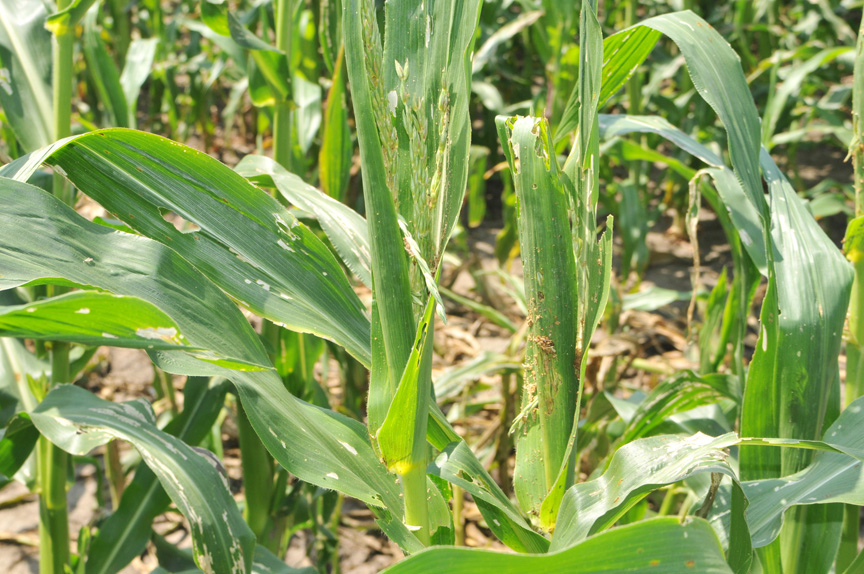Everyone remembers last year; many are awaiting this year’s fall armyworm (FAW) attack. Still, at this time, there is little activity reported in the Midwest. Like a very similar species, the true armyworm, FAW behavior is much the same in that they can consume large amounts of foliage as they move together in large numbers. There have been a few reports of armyworm damage in July, feeding mostly on cornfield edges One major difference, whereas armyworm feeds primarily on grasses (e.g., corn, small grains, fescue), FAW will feed on a much broader range of plants, including both grasses and broadleaves. Last year, it was alfalfa fields that were primarily targeted.
We warned of FAW last August as well, and some very impressive outbreaks followed. While this year is not guaranteed to follow suit, we think it prudent to monitor fields in coming weeks. In Indiana, those with late-season crops, (e.g., double-crop soybean, forages, cover crops, alfalfa) should be inspecting for feeding damage. This is very important for newly-seeded forages. You have been warned, get them early! Small larvae are relatively easy to control with the maximum label rate of a range of pyrethroids. However, when the worms are about an inch long is when damage is very noticeable and most controls are applied. At this size, they can denude plants rapidly when they are “marching.” Large caterpillar control is difficult, if not impossible, as many found out in 2021. It is not time for panic yet, nor will spraying at this time help with later infestations. It will likely be a month or more before the FAW story of 2022 is told, and this year, a network of moth trappers around the state should provide some earlier warning of heavy flights, so stay tuned!



